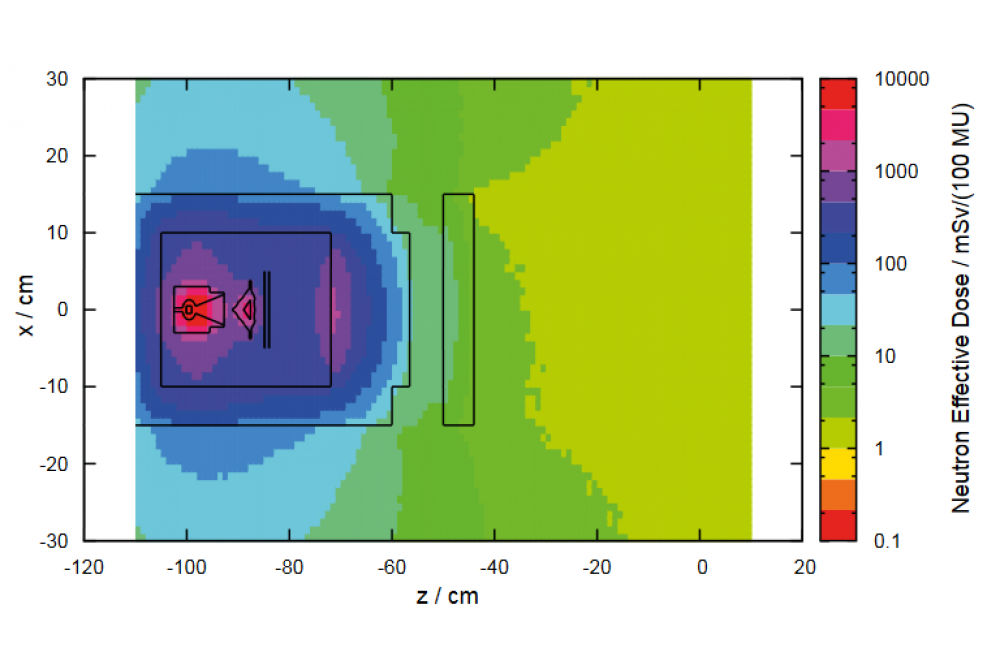Monte Carlo Simulation of the Neutron Radiation Field around a Medical 18 MV Linac
Einleitung
Today the majority of cancer radiation therapy treatments are performed at medical electron linear accelerators (linacs). The accelerated electrons can be used directly for irradiation of the tumor or for the generation of highly penetrating bremsstrahlung photons inside a high Z target. The photon radiation field can be formed by primary collimators (jaws) and so called multi leaf collimators (MLC) generally made of tungsten to achieve a good tumor conformity. The use of higher photon energies has some advantages over lower energies such as the better sparing of tissue near the body surface due to a longer dose build-up. However photons with energies higher than ~7 MeV can additionally to the interaction with bound electrons undergo inelastic reactions with nuclei. These photonuclear reactions lead to the emission of fast neutrons which contaminate the primary photon field. The neutrons might penetrate through the collimators and deliver out-of-field dose to the patient when electrons with energies over 7 MeV are used for bremsstrahlung generation [1]. Furthermore the materials inside the linac head as well as the air inside the treatment room get activated which might deliver dose to the medical employees even when the linac is not in operation. A detailed knowledge of these effects is essential for adequate radiation protection of the employees and an optimal patient treatment.
Methoden
It is a common method to study the radiation fields of such medical electron linacs by means of MonteCarlo simulations [2]. The most commonly used Monte Carlo code for that purpose is the EGSnrc code which represents the gold standard in medical physics [3]. That code treats coupled electron-photon transport and does not include photonuclear reactions. Therefore a simulation of the neutron radiation field as well as the activation is not possible with EGSnrc. For the investigation of the effects caused by these photonuclear reactions a typical linac in high energy mode (Varian Clinac in 18 MV-x mode) as well as the surrounding bunker were modelled and simulated using the Monte Carlo code FLUKA which includes extensive nuclear reaction and neutron transport models additionally to electron-photon transport as well as capabilities for a detailed study of effective dose distributions and activation yields [4,5]. Obtaining accurate results with low statistical uncertainties by such simulationsis practically not feasible on one single CPU due to the complex nuclear reaction models in FLUKA. Therefore parallel computing on a cluster was applied.
Ausblick
Detailed studies of the neutron radiation field and the activation situation inside the treatment room and their consequences for radiation protection of the patients and the medical employees are planned for the future by use of the presented FLUKA model.




